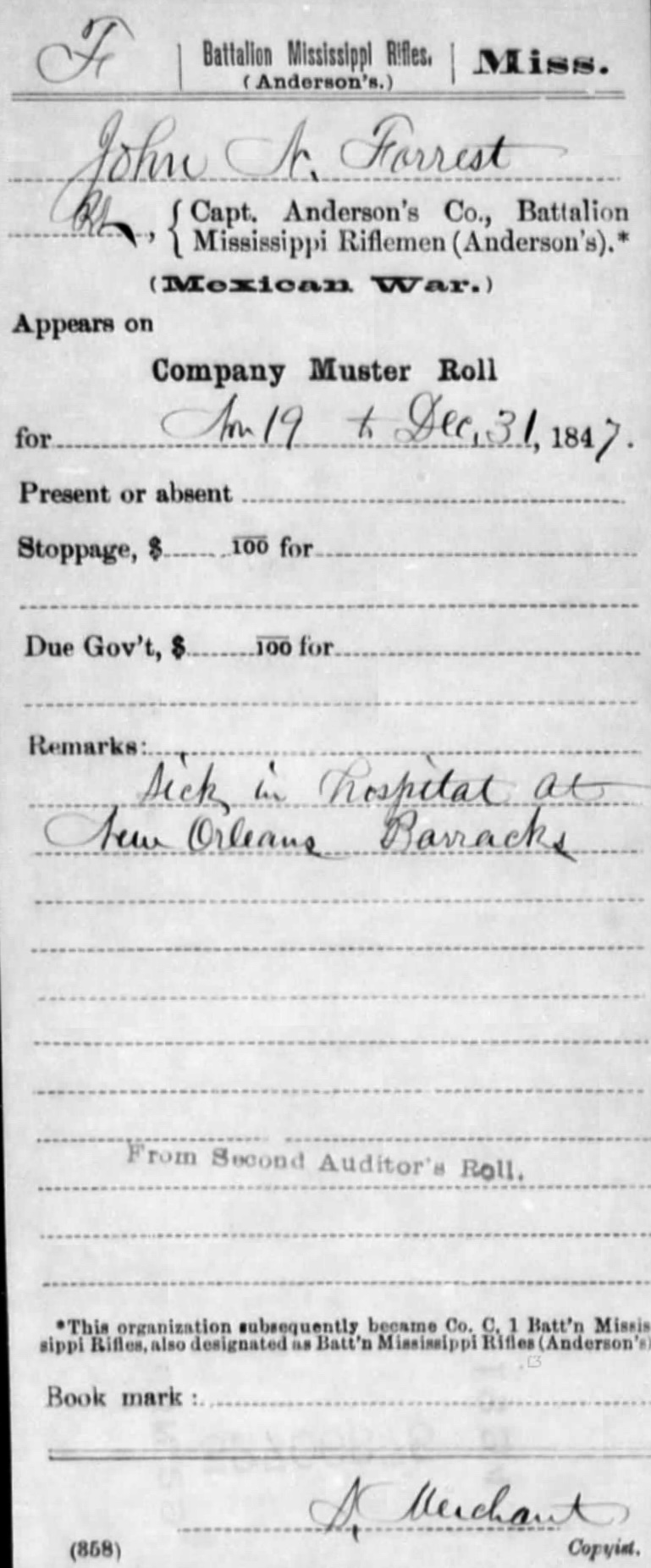5fish
Well-Known Member
- Joined
- Jul 28, 2019
- Messages
- 14,788
- Reaction score
- 5,466
How could Nathan Forrest have a spine injury and ride around on horses for four years of war... His brother John was shot in the spine... It looks like a cover up. I have checked records and I can not find him, was he in the Mexican-American War...
.
It was later said that Forrest was "half-paralyzed cripple, shot through the lower spine" during the Mexican-American War.
Nathan Bedford Forrest, a future Confederate general and later a Grand Wizard of the Ku Klux Klan, served in the Mexican-American War as a private in Anderson's Rifles, but was discharged due to a disability, possibly a spinal injury, before seeing combat.
Anderson's Battalion of Mississippi Rifles mustered into service at Vicksburg in September 1847 with 445 men, spent most of its war service in garrison at Tampico, and mustered out of service at Vicksburg in July 1848 with 342 men. It suffered no battle deaths and lost thirty-eight men to other causes

 en.wikipedia.org
en.wikipedia.org
John N. Forrest was one of the six Forrest brothers who engaged in the interregional slave trade in the United States prior to the American Civil War. A disabled veteran of the Mexican–American War, he worked in family businesses, including as the jailor at Nathan Bedford Forrest's slave pen in downtown Memphis.
.
It was later said that Forrest was "half-paralyzed cripple, shot through the lower spine" during the Mexican-American War.
Nathan Bedford Forrest, a future Confederate general and later a Grand Wizard of the Ku Klux Klan, served in the Mexican-American War as a private in Anderson's Rifles, but was discharged due to a disability, possibly a spinal injury, before seeing combat.
Anderson's Battalion of Mississippi Rifles mustered into service at Vicksburg in September 1847 with 445 men, spent most of its war service in garrison at Tampico, and mustered out of service at Vicksburg in July 1848 with 342 men. It suffered no battle deaths and lost thirty-eight men to other causes

John N. Forrest - Wikipedia
 en.wikipedia.org
en.wikipedia.org
John N. Forrest was one of the six Forrest brothers who engaged in the interregional slave trade in the United States prior to the American Civil War. A disabled veteran of the Mexican–American War, he worked in family businesses, including as the jailor at Nathan Bedford Forrest's slave pen in downtown Memphis.
Last edited:

